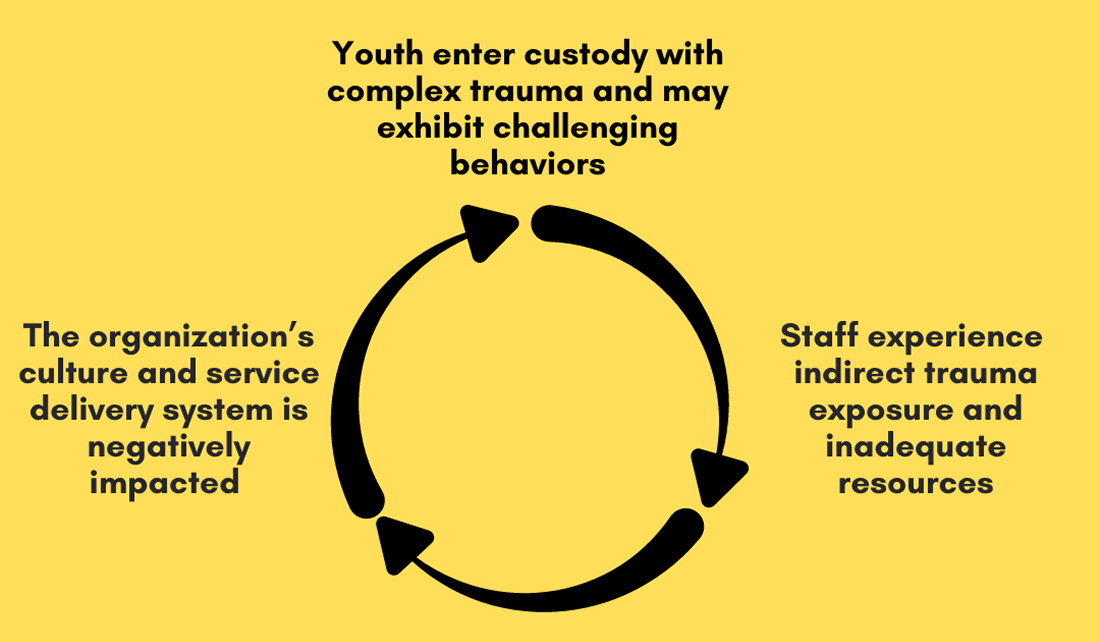Trauma is a pervasive public health issue that drives survivors toward interactions with systems including the juvenile justice system. We’ve applied portions of Sprang, Miech, and Gusler (2023) to illustrate how trauma can affect juvenile justice facilities.
- Youth enter the system with high needs that require staff to regularly apply intra- and interpersonal skills in high-stakes circumstances. This requires a tremendous amount of emotional labor, on top of the physical labor demanded during emergency responses.
- Staff may experience stress reactions due to indirect trauma exposure and a lack of resources (Brady, 2017; Shoji et al., 2015). These resources include training, mentoring, and sufficient personnel to adequately cover shifts.
- In a parallel and cascading process, organizations are impacted by the nature of this trauma work, which if unaddressed can create toxic, and ineffective service delivery systems characterized by high absenteeism, presenteeism, attrition, and an unsupportive culture (Ratrout & Hamdan-Mansour, 2020).
To address the dual harms—individual and organizational—created by the intensity of trauma work in juvenile facilities, leaders need to focus on creating trauma- and secondary trauma-informed cultures that promote physical and psychological health and resist re-traumatization (Jankowski et al., 2019; Lang et al., 2016).



